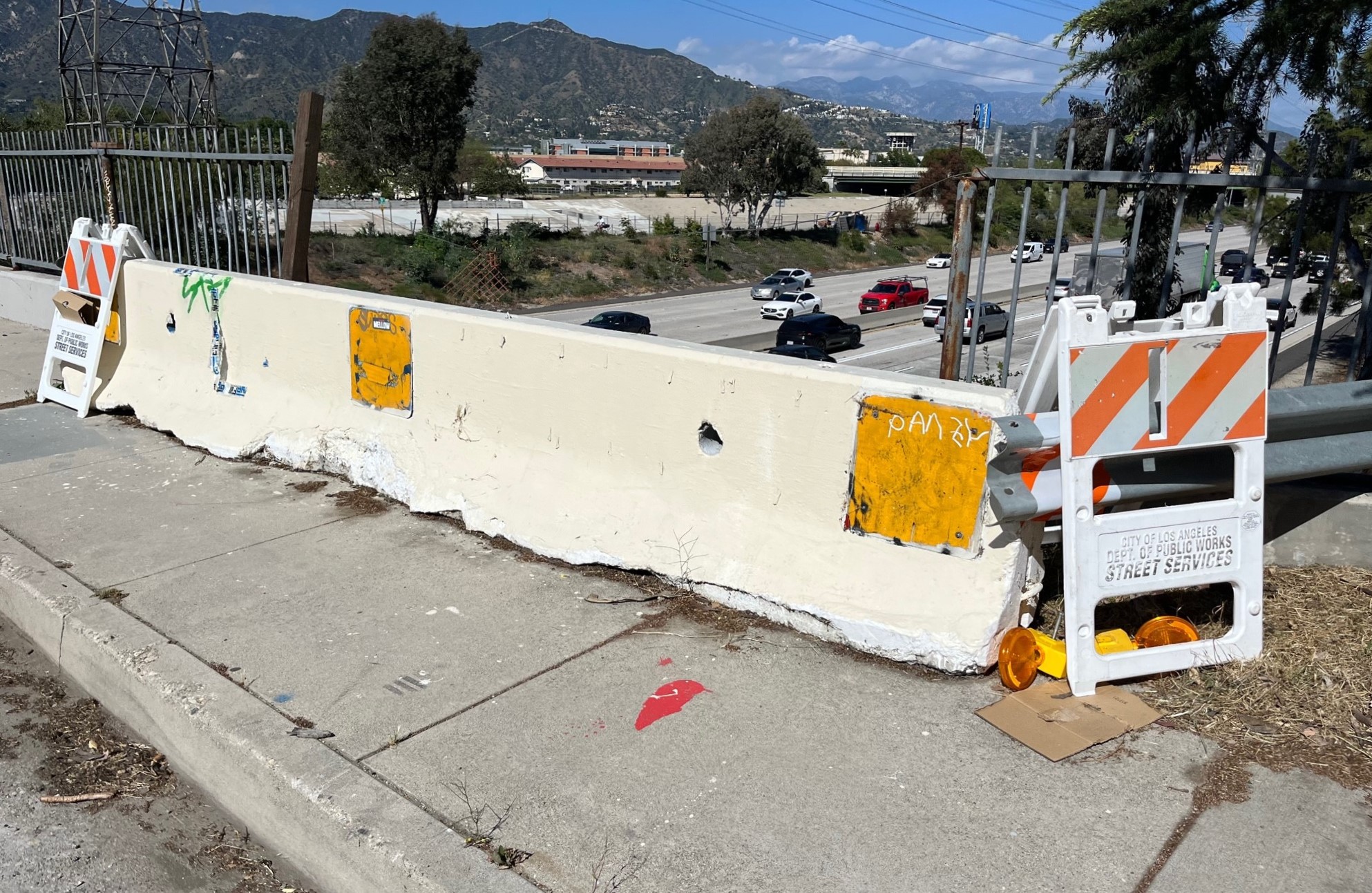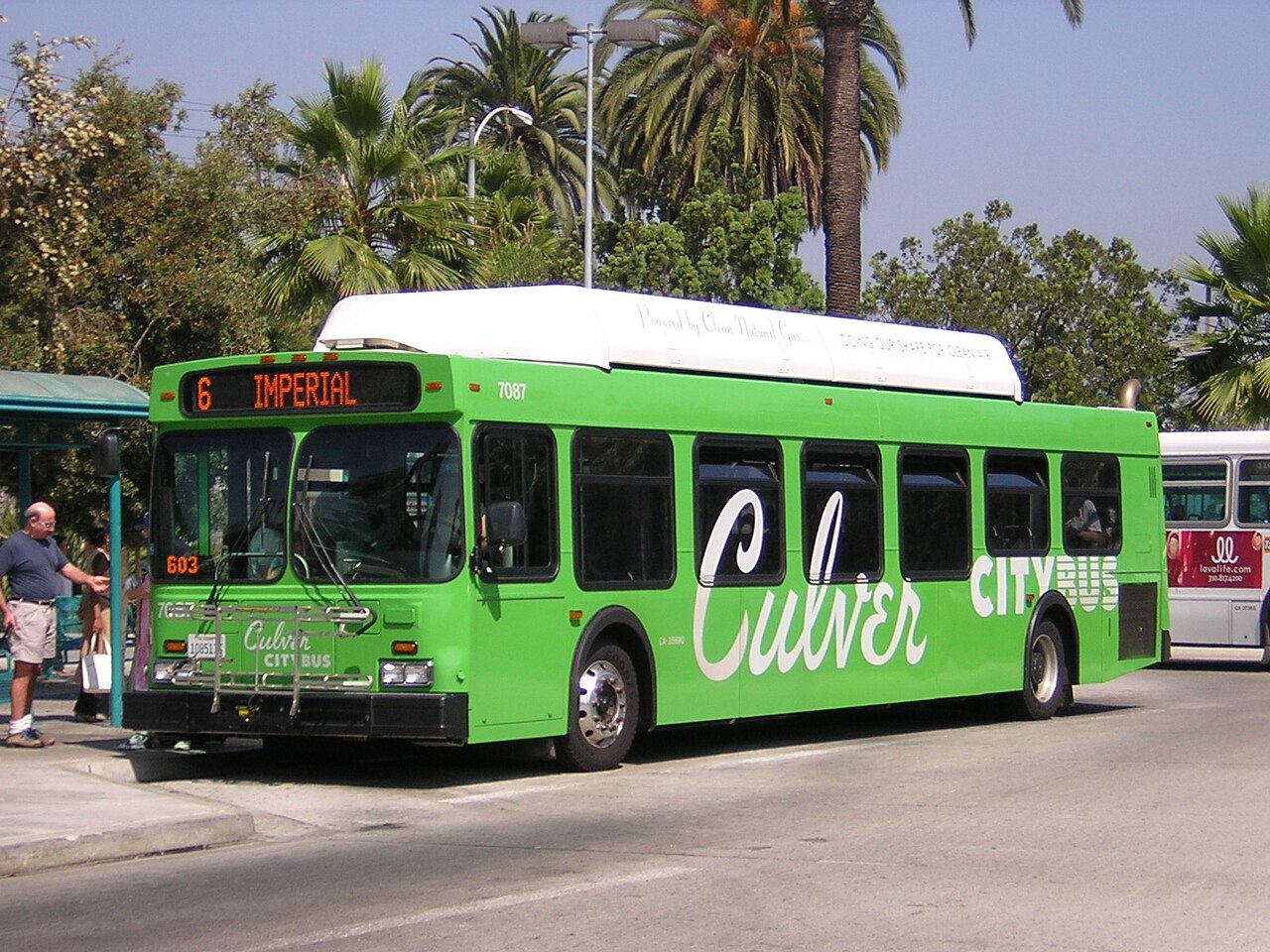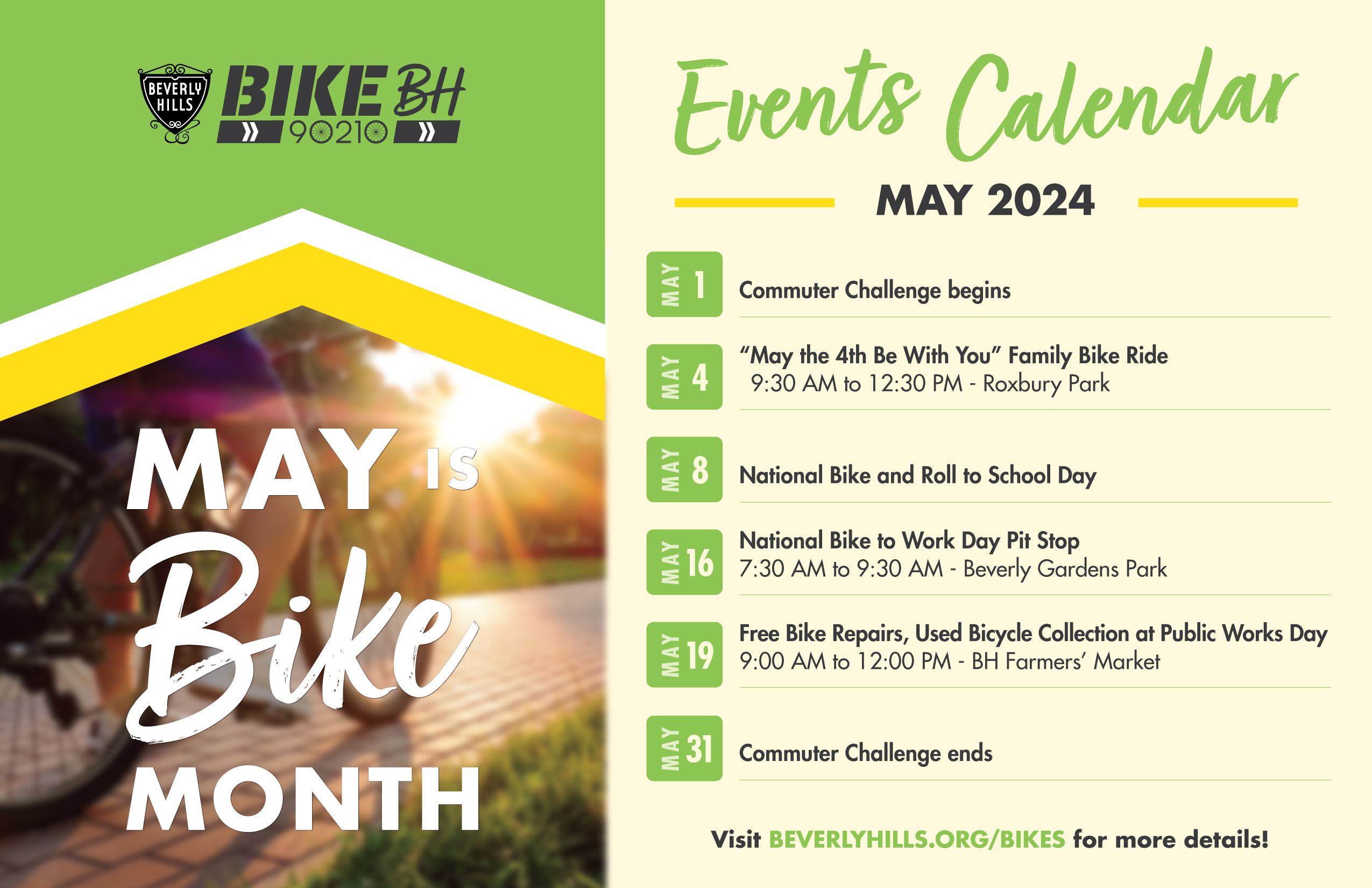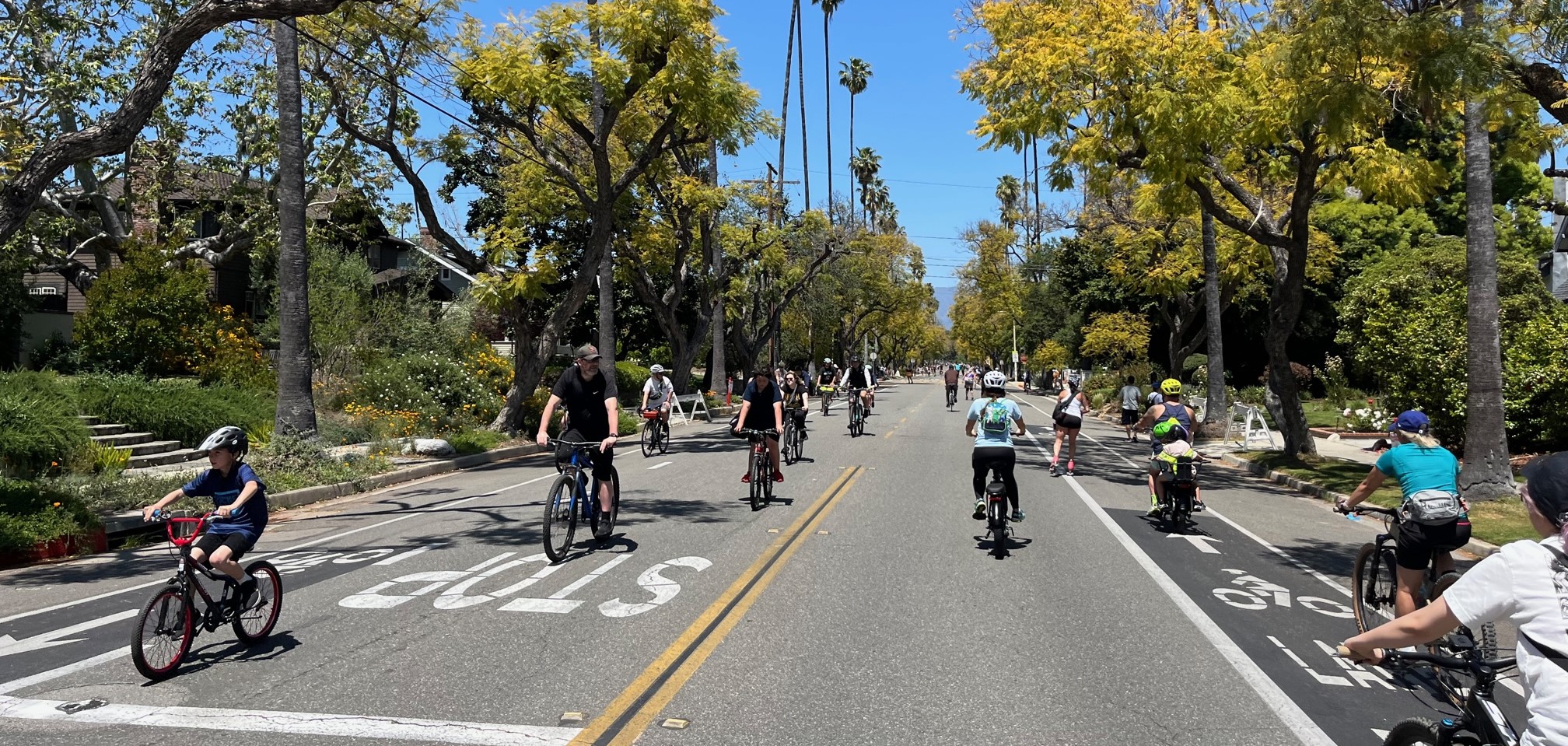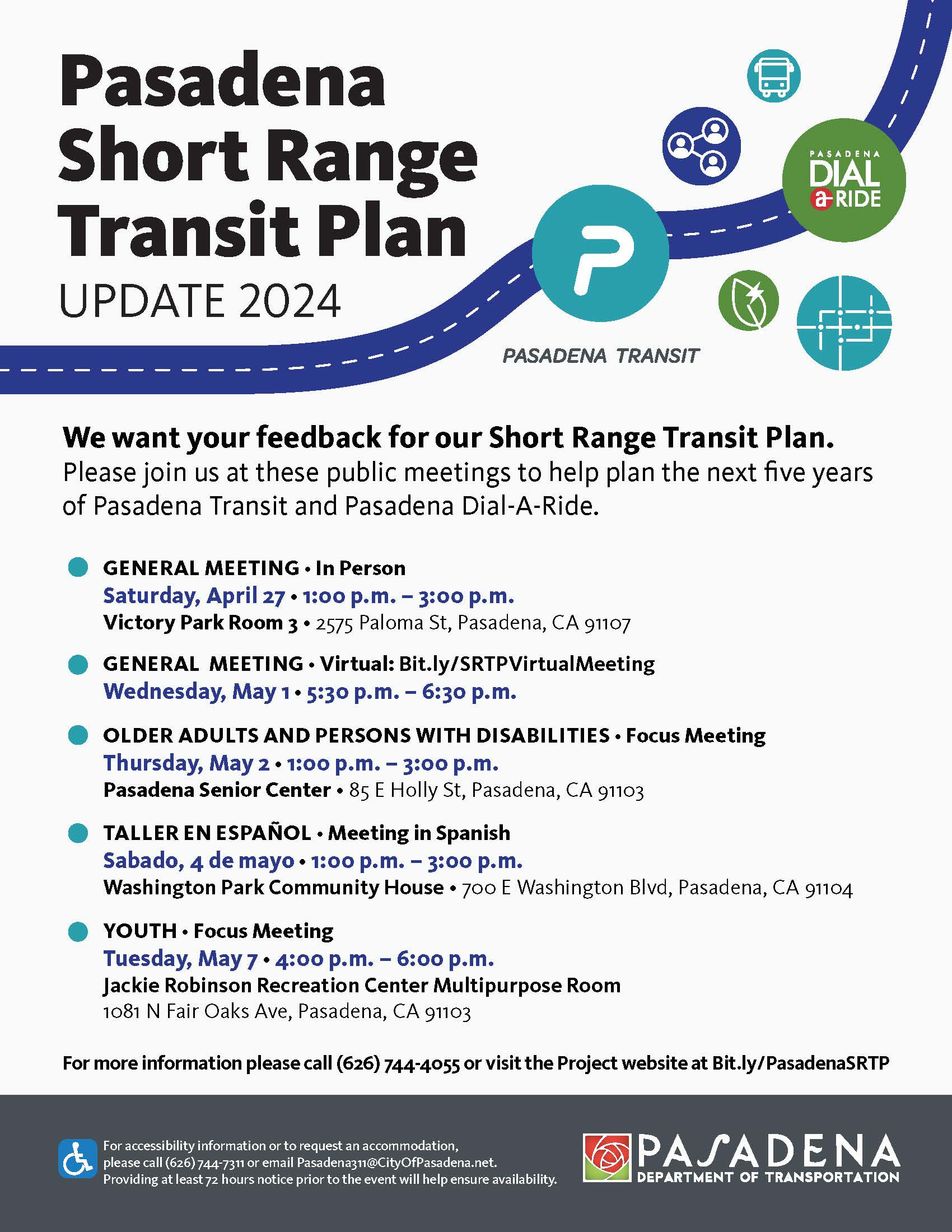Sixth Street Viaduct Replacement Project Takes Another Step Forward
1:44 PM PDT on July 3, 2014
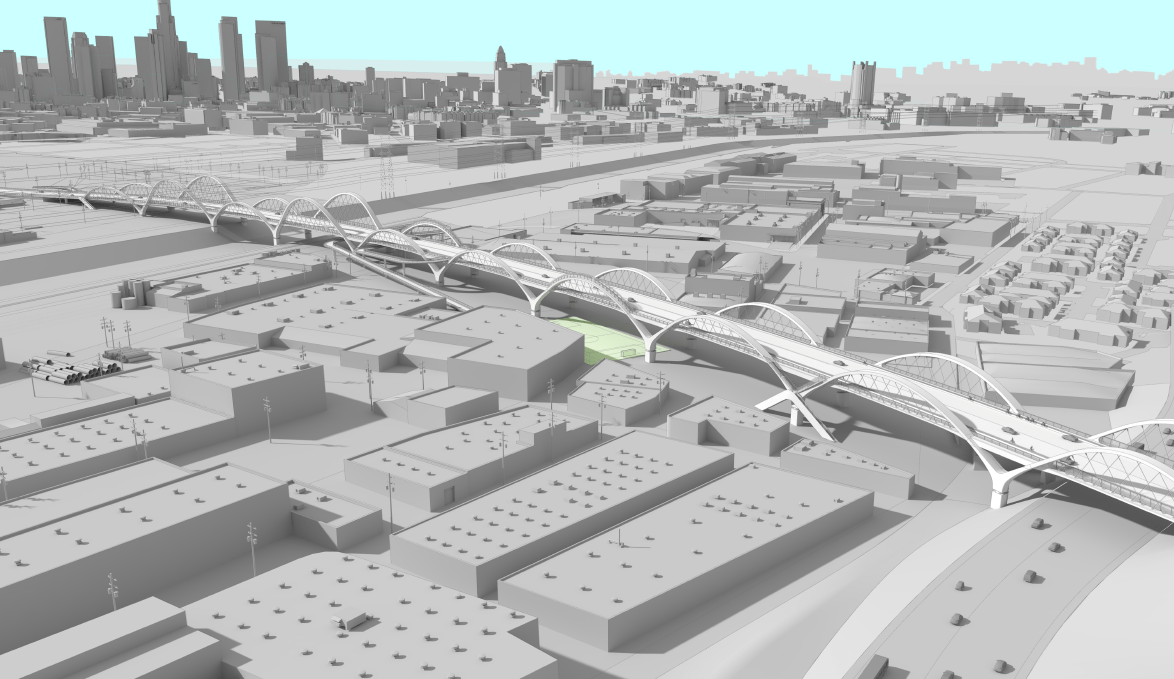
The new bridge appears to make space for cars, bicyclists, and pedestrians. Source: 6th Street Viaduct Replacement Project
At a press briefing yesterday morning, Councilmember Huizar and representatives from the Bureau of Engineering (BoE) and the Department of Cultural Affairs (DCA) announced that "the planning and building" of the Sixth Street Viaduct is progressing "substantially."
As proof, they released two new renderings of the bridge illustrating the efforts of the BoE, the design team lead HNTB, architect Michael Maltzan, the joint venture of Skanska and Stacy and Witbeck, and Huizar’s office to refine the design vision of a ribbon of arches across the entire length of the new Viaduct. The arches will soar up to 60 feet, throughout, and two will feature ascending stairs (rendering below), offering patrons unique views of the city, river, and park space below.
To tell you the truth, though, the briefing took me by surprise.
I didn't even find out about it until after the fact, something that I find odd for a few reasons.
For one, this is one of the most iconic structures in the city and is widely beloved, including by many in Boyle Heights who have been very vocal in asking that the city and design team do more to involve the community in the process of determining the bridge's future.
For another, this $401 million project is the largest of the BoE’s $1 billion bridge project portfolio, and will have a significant impact on folks on both sides of the bridge and below it during the four years of construction and beyond (should it impact housing prices, for example).
And, third, over the past couple of months, I had tried contacting project people through the website and facebook regarding project updates, all to no avail.
I had been particularly curious about the progress of the project because, at a public meeting on the project last year, the crowd had been told that the design would be 90% completed by January of 2014 and that a community briefing would be held at that time so the public could review the design. Participants also learned that the reconfiguration of intersections that would be impacted by increased traffic flows once demolition was underway (below) was to have begun this summer.
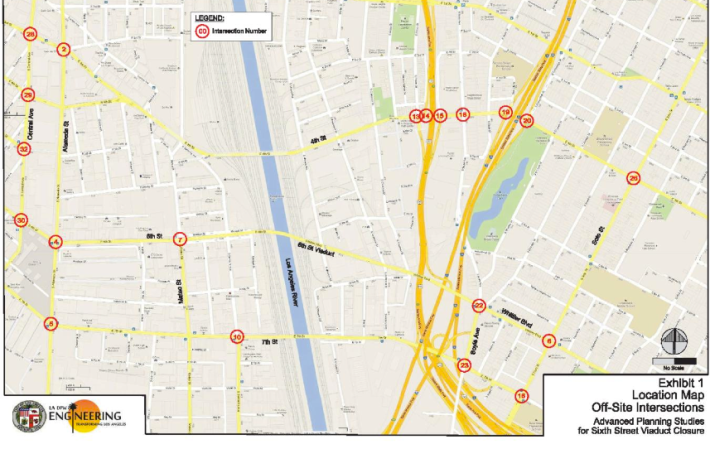
Those plans and the briefing never materialized. Nor did the work on the intersections.
Instead, it now appears intersection improvements and reconfigurations will likely begin in the fall. And, some time in August (or later), the comprehensive set of updated Viaduct renderings will be completed and presented for public review at a briefing.
Notably, although only two renderings were released yesterday, they do seem to signal a slight shift in the tone of the project.
The first set were sleek and seemed to emphasize the smooth and speedy shuttling of cars back and forth across the 3500 ft. span, as seen in the video below.
There appeared to be no space for the many bicyclists I see commuting across the bridge daily. And, when I asked if bike lanes were part of the plan, I was referred to the renderings.
While I later received confirmation that bike lanes would be included (and they appeared to have been sort of planned for, according to Caltrans' 2011 Record of Decision), it wasn't clear where they would fit in.
The newer renderings have remedied that by fully integrating bicyclists (in abundance, no less, below) into the design. The bridge speed limit, which will be set at 35 mph, should also help keep the bridge navigable for everyone. In theory, at least.
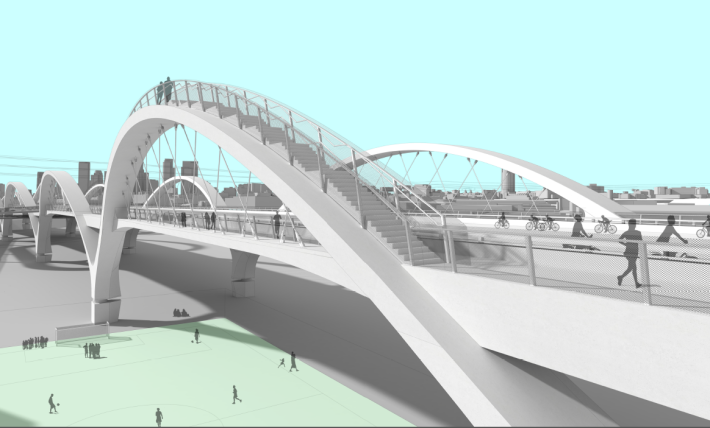
What remains unclear is exactly how much will be done to help the Boyle Heights community on the east end of the bridge aid connect with the project.
As noted here, the bridge improvements will stop several hundred feet and a freeway on-ramp short of Boyle Heights.
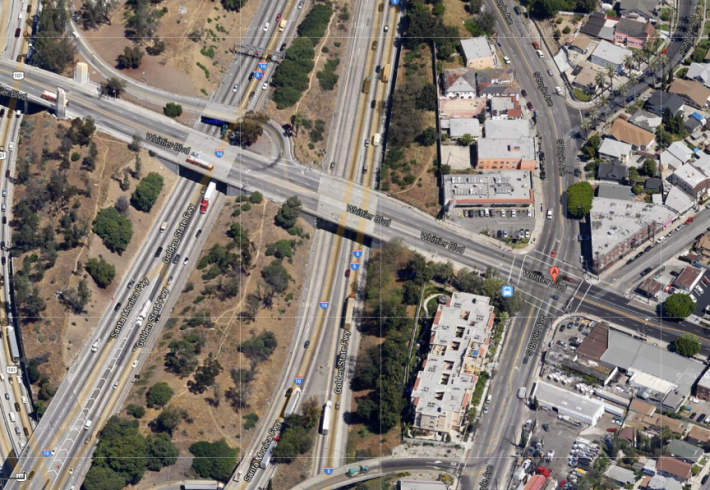
The reason is that the viaduct officially ends at the towers (pictured above at top, left) while the remaining sections are considered separate structures and owned and maintained by Caltrans (extending over the freeways to the intersection at right).
The funding for the viaduct project comes primarily from the Federal Highway Bridge Program and is supplemented with matching funds from the State Proposition IB Seismic Safety Retrofit Program. Thus, it has to be directed towards creating a sound structure for the viaduct, which experts have estimated currently has a 70% probability of collapsing in a major earthquake.
Integrating the viaduct with the Boyle Heights community more organically -- or simply making it easier for bicyclists and pedestrians to traverse the across the remaining bridges and freeway on-ramp -- falls outside the scope of the project altogether, unfortunately.
All that said, there are a few potential wins for Boyle Heights.
One is a proposal by Councilmember Huizar for a soccer field on the east side of the river. He is still in the process of sourcing funds to build it, but has made clear the field is part of his effort to make the bridge and the space below it a welcoming destination for the community.
Another is the selection of Glenn Kaino as the artist who will "provide art design services" for the project.
Kaino grew up in Boyle Heights and understands the importance of the bridge to the area. Incidentally, he even has a recent work entitled, "Bridge," consisting of gold casts of the arm of Olympic athlete Tommie Smith arranged in a kind of metaphorical bridge of memories linking past and present struggles. Smith was one of the athletes that raised his black-gloved fist in a Black Power salute on the podium at the 1968 Games in Mexico City, protesting the inequality African-Americans faced at home. (See the iconic photo of Smith, here; see images of the work here; see more on Kaino's work, here, including a piece inspired by the Zapatistas)
Kaino's credentials notwithstanding, it isn't quite clear what it means to provide "art design services." Whatever that entails seems to be a departure from the aspirations of the DCA to see an iconic art installation that "responds to the architecture" of the new structure and is integrated into the project. If it is indeed a down-scaling in thinking, it is likely due to the challenge of populating such a massive span with art on the small budget allotted for it -- 1% of the construction budget, or ~$1.3 million.
Finally, the third potential win is the negotiation of a Project Labor Agreement (PLA). According to Public Works, the Federal Highway Administration just approved their proposed PLA and they are now working to get labor to sign on. Ideally, a PLA provides for the hiring of a specific percentage of disadvantaged workers and apprentices. As detailed here (regarding jobs on the Crenshaw Line), it isn't a perfect system. And, the fact that project funds are from a federal source means that the hiring pool the contractors will draw from must be a national, rather than local, one. But, it is still a step in the right direction and could potentially benefit construction workers from the area.
We won't know much more in the way of specifics until the community briefings are held a few months from now. In the meanwhile, you can find the renderings and information from past briefings at the website for the Sixth Street Viaduct Replacement Project, here.
Sahra is Communities Editor for Streetsblog L.A., covering the intersection of mobility with race, class, history, representation, policing, housing, health, culture, community, and access to the public space in Boyle Heights and South Central Los Angeles.
Stay in touch
Sign up for our free newsletter
More from Streetsblog Los Angeles
Freeway Drivers Keep Slamming into Bridge Railing in Griffith Park
Drivers keep smashing the Riverside Drive Bridge railing - plus a few other Griffith Park bike/walk updates
This Week In Livable Streets
Bike Month, Hyperion street safety, Eastside rail plans, Pasadena transit, CicloIRVINE, Culver City bus service, and more
Active Streets Mission-to-Mission – Open Thread
Tens of thousands of participants biked, walked, skated and scootered on car-free streets through San Gabriel, South Pasadena and Alhambra
